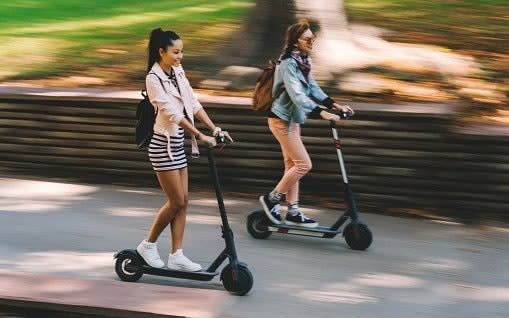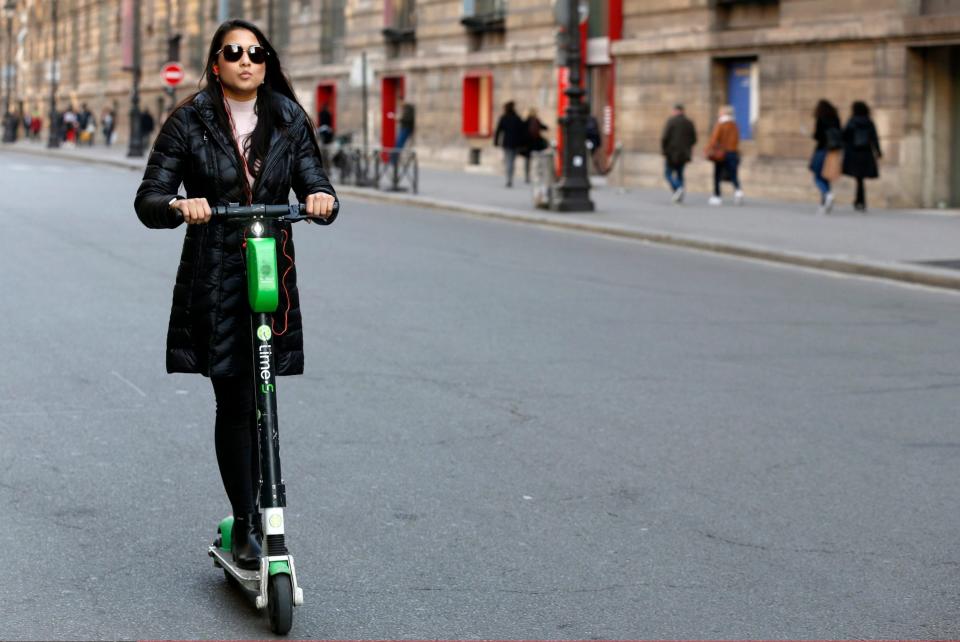Plans to legalise e-scooters to get people off public transport trigger concern among MPs

E-scooters should be limited to the same speed as milk floats and be fitted with bells to warn pedestrians, MPs have said ahead of legal trials starting next week.
The devices, which are due to have a speed limit of 15.5mph when the public start using them legally in test areas, should be barred from travelling over 10mph, ministers were urged.
Appearing before the Transport select committee on Wednesday, the chair of Royal National Institute of Blind People (RNIB) said she was ‘shocked’ by how high the speed limit had been set and warned the charity viewed e-scooters as a 'real and genuine threat to blind people'.
MPs questioned why e-scooters would be allowed to be driven at 15.5mph, describing the figure as ‘arbitrary’.
Lincoln MP, Karl McCartney, said today: “I am of an age where I can remember electric milk floats and they certainly didn’t travel at that speed - not even Ernie's, The Fastest Milkman in the West. So why are e-scooters going to be going at 15mph when probably less than 10mph would seem more safe?”
His comments were backed by RNIB chair, Eleanor Southwood, who said the charity had wanted the speed limit to be as close to walking speed as possible.
“We do consider e-scooters to be a real and genuine threat to the ability of blind people to move around independently and safely,” she said.
Ms Southwood called for the devices to have ‘geofencing’ software installed that would block them from getting onto pavements.
E-scooters are currently illegal to ride on public roads and pavements in the UK, however as many as 200,000 are estimated to have been bought so far.
Experts have warned that their popularity is set to grow as people are being urged to avoid public transport due to the coronavirus pandemic.
As a result, ministers announced earlier this year that they were bringing forward trials to see how e-scooters can be safely introduced on UK roads and streets.
From next week, people will be able to ride e-scooters in public legally for the first time in designated test areas, starting in Teesside.
Under the Government’s scheme people are allowed to ride approved hire e-scooters, but not privately owned ones, on roads, bike lanes and cycle tracks - although not on pavements.

The Department for Transport has set the speed limit on the gadgets at 15.5mph and said riders will have to be at least 16 and hold a provision driver’s licence.
Riders are advised to wear a helmet, but it will not be mandatory, along the same lines as cycling.
The AA also backed suggestions from MPs that e-scooters should have bells or buzzers on them to warn people of their approach.
Lorna Lee, Campaigns Manager for the AA, told the committee: “Some kind of audible device on them would be something we would support.”
Meanwhile, the committee was also warned that e-scooters could make young people more unfit as the majority of journeys the devices are being used for replaced walks or bike rides.
Rachel Lee, policy and research manager of the walking charity Living Streets, said: “I don’t think it (riding e-scooters) has any benefits in terms of being active and in some ways it could be a disbenefit.”
Phillip Darnton OBE, Chairman of the Bicycle Association, which represents some e-scooter sellers, warned MPs that it would be “very difficult” to stop people riding the gadgets on the pavement.
He added: “My much greater concern is that people will use e-scooters, frighten themselves on them, and actually ride them on the pavement and it be very difficult to stop.
“It’s not clear at all what offences are now going to be applicable to riders and users of these scooters.”
Mr Darnton, also said that the current generation of e-scooters were not eco-friendly as they were difficult to fix if things went wrong, meaning the average hire scooter lasted around 12 weeks before being thrown away.


 Yahoo Finance
Yahoo Finance 